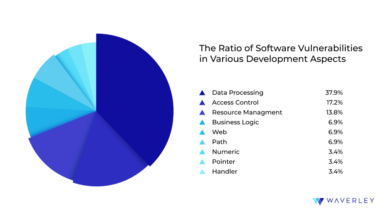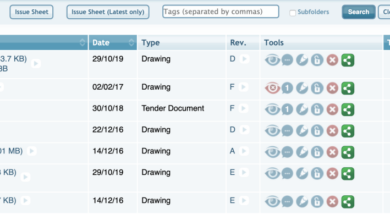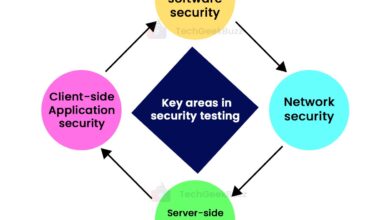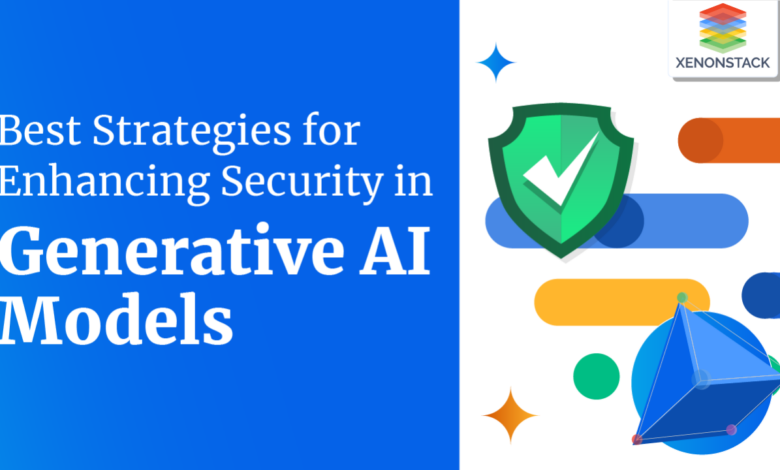
The Evolving Role of GenAI in Software Development and Application Security
The evolving role of GenAI in software development and application security is rapidly reshaping the tech landscape. No longer a futuristic fantasy, generative AI is actively automating tasks, improving security testing, and even enhancing the overall quality and reliability of software. This shift presents exciting opportunities for increased efficiency and innovation, but also necessitates careful consideration of ethical implications and potential challenges.
From automating mundane coding tasks like boilerplate generation to proactively identifying vulnerabilities before they become exploitable threats, GenAI is proving to be a game-changer. This post explores the transformative power of GenAI, examining its benefits, limitations, and the crucial ethical considerations surrounding its implementation.
Generative AI’s Impact on Software Development Processes: The Evolving Role Of Genai In Software Development And Application Security
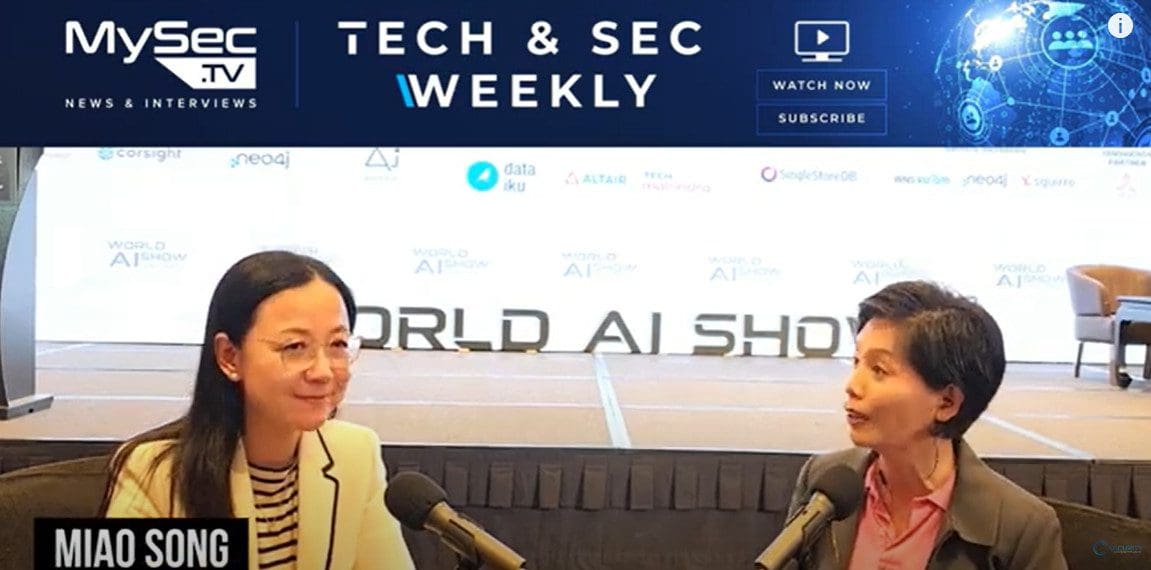
Generative AI is rapidly transforming software development, offering unprecedented opportunities to automate tasks, boost productivity, and improve the overall quality of software. Its ability to understand and generate code opens doors to significant advancements in how we build and maintain applications. This shift is not just about incremental improvements; it’s a fundamental change in the developer’s workflow, requiring adaptation and careful consideration of both benefits and challenges.
The core impact of generative AI lies in its capacity to automate various aspects of the software development lifecycle. This automation isn’t about replacing developers; instead, it’s about empowering them to focus on higher-level tasks requiring creativity and strategic thinking, freeing them from repetitive and time-consuming chores.
Generative AI’s Automation of Coding Tasks
Several GenAI tools are already automating key aspects of software development. These tools can generate boilerplate code, write unit tests, and even create documentation, significantly reducing development time and effort. The following table highlights some examples, showcasing the benefits and limitations of each.
| Tool | Task | Benefits | Limitations |
|---|---|---|---|
| GitHub Copilot | Code generation, unit test generation, code completion | Increased coding speed, improved code quality (through suggestions), reduced boilerplate code | Potential for generating inaccurate or insecure code, requires careful review, reliance on existing codebases for training data |
| Tabnine | Code completion, code generation | Enhanced developer productivity, reduced typing effort, support for multiple programming languages | Accuracy depends on the quality of training data, may not always generate optimal code, potential for generating repetitive code |
| Amazon CodeWhisperer | Code generation, code completion, bug detection | Improved developer productivity, enhanced code quality, integration with AWS services | Requires AWS account, potential for generating biased or inaccurate code, reliance on AWS’s training data |
| Google Cloud Codey | Code generation, code completion, documentation generation | Integration with Google Cloud Platform, support for multiple programming languages, improved code readability | Requires Google Cloud Platform account, potential for generating insecure code, reliance on Google’s training data |
Enhancing Developer Productivity and Reducing Development Time
The application of GenAI in agile development methodologies promises significant improvements in developer productivity and reduced development time. For instance, GenAI can automate the creation of user stories and acceptance criteria, generating initial drafts for developers to refine. It can also assist in sprint planning by analyzing project requirements and suggesting optimal task assignments. Furthermore, GenAI can facilitate continuous integration and continuous delivery (CI/CD) pipelines by automating code testing and deployment processes.
Consider a scenario where a team is developing a new feature for an e-commerce platform. Instead of manually writing boilerplate code for database interactions, the team can use a GenAI tool to generate this code automatically. This saves significant time and allows the developers to focus on the core logic of the new feature. Similarly, GenAI can automatically generate unit tests, ensuring higher code quality and reducing the risk of bugs.
Challenges of Integrating GenAI into Software Development Workflows
Integrating GenAI into existing software development workflows presents several challenges. One major hurdle is the need for robust infrastructure capable of handling the computational demands of GenAI tools. These tools often require significant processing power and memory, potentially requiring upgrades to existing hardware and software. Additionally, ensuring data security and privacy is crucial, as GenAI tools often process sensitive code and project information.
Effective data governance and access control mechanisms are necessary to mitigate risks.
Another challenge lies in the potential for generating inaccurate or insecure code. While GenAI tools can significantly improve developer productivity, they are not a replacement for human expertise. Developers need to carefully review and validate the code generated by GenAI tools to ensure its accuracy, security, and compliance with coding standards. Furthermore, integrating GenAI tools into existing development processes requires careful planning and change management to ensure a smooth transition and minimize disruption.
GenAI in Application Security Testing and Vulnerability Detection
Generative AI (GenAI) is rapidly transforming application security testing, offering the potential to significantly improve the speed, accuracy, and efficiency of vulnerability detection. Traditional methods often struggle to keep pace with the ever-increasing complexity of software and the sophistication of attack vectors. GenAI, however, leverages its ability to analyze vast amounts of code and identify patterns indicative of vulnerabilities, providing a powerful new tool in the cybersecurity arsenal.GenAI’s Enhanced Vulnerability Identification and ClassificationGenAI can analyze source code, identifying potential vulnerabilities far more efficiently than manual code reviews or traditional static analysis tools.
For instance, it can detect SQL injection vulnerabilities by recognizing patterns in how database queries are constructed. If the code directly incorporates user input into a query without proper sanitization, GenAI flags it as a high-risk vulnerability. Similarly, it can identify cross-site scripting (XSS) vulnerabilities by recognizing instances where user-supplied data is directly embedded into HTML output without escaping special characters.
By leveraging machine learning models trained on vast datasets of known vulnerabilities, GenAI can classify these threats with high accuracy, prioritizing the most critical issues for immediate remediation. Furthermore, GenAI can go beyond simple pattern matching; it can understand the context and flow of the code to detect more subtle vulnerabilities that might be missed by traditional methods.
For example, it can identify vulnerabilities stemming from insecure authentication mechanisms or improper access control by analyzing the interaction between different code modules.
GenAI-Powered Security Testing versus Traditional Penetration Testing
A comparison of GenAI-powered security testing and traditional penetration testing methods reveals both strengths and weaknesses in each approach.
The following table summarizes the key differences:
| Feature | GenAI-Powered Testing | Traditional Penetration Testing |
|---|---|---|
| Speed | Significantly faster for initial vulnerability identification. | Slower, more time-consuming, requiring manual effort. |
| Cost | Potentially lower initial cost, but ongoing maintenance and model training are needed. | Can be expensive, requiring skilled penetration testers. |
| Coverage | Can analyze vast amounts of code, potentially achieving higher coverage. | Coverage depends on the tester’s skills and time constraints. |
| Accuracy | Accuracy depends on the quality of the training data and model. False positives are possible. | Accuracy depends on the tester’s skills and experience. False negatives are possible. |
| Scalability | Highly scalable, capable of analyzing large codebases. | Scalability is limited by the availability of skilled testers. |
GenAI in Promoting Secure Coding Practices, The evolving role of genai in software development and application security
GenAI can play a proactive role in creating more secure code by suggesting improved coding practices and identifying potential security flaws during the development process. Integrated into IDEs (Integrated Development Environments), GenAI can act as an intelligent assistant, providing real-time feedback on code quality and security. For instance, as a developer writes code, GenAI can flag potential vulnerabilities and suggest secure alternatives.
It can automatically enforce secure coding standards, preventing common vulnerabilities like buffer overflows or insecure use of cryptographic libraries. Moreover, GenAI can analyze code for compliance with security best practices and industry standards, ensuring that the application adheres to relevant regulations and guidelines. This proactive approach to security helps to shift the focus from reactive vulnerability remediation to preventative measures, resulting in more robust and secure software.
For example, if a developer uses a vulnerable function, GenAI can suggest a safer alternative and explain the security implications of the original choice. This proactive approach significantly improves the overall security posture of the software.
The Role of GenAI in Enhancing Software Quality and Reliability
Generative AI (GenAI) is rapidly transforming software development, offering powerful tools to improve not only the speed of development but also the quality and reliability of the final product. By automating tedious tasks, identifying potential issues early in the development lifecycle, and assisting in rigorous testing, GenAI is poised to significantly enhance software engineering practices. This leads to more robust, reliable, and maintainable applications.GenAI’s impact on software quality assurance is multifaceted, encompassing various stages of the development process.
From initial design and code generation to testing and deployment, GenAI offers opportunities to improve efficiency and reduce errors.
GenAI in Automated Software Quality Assurance
Let’s imagine a scenario where a team is developing a complex e-commerce platform. Traditionally, testing this platform would involve extensive manual testing, which is time-consuming and prone to human error. With GenAI, the process can be significantly streamlined. First, GenAI can analyze the system requirements and design specifications to generate comprehensive test cases automatically, covering various scenarios, including edge cases and boundary conditions.
Second, GenAI can then execute these tests, comparing the actual results with the expected results and automatically reporting any discrepancies. Third, based on the test results, GenAI can even suggest improvements to the code or design to address the identified issues. The anticipated outcome is a reduction in testing time by at least 50%, a significant increase in test coverage, and a reduction in the number of bugs found in production.
This translates to cost savings and improved customer satisfaction.
GenAI Assisted Code Review and Bug Detection
GenAI can significantly assist in automating code review processes. For instance, consider a section of Python code responsible for handling user authentication:“`pythondef authenticate_user(username, password): # … (Existing code for database interaction) … if user_exists and password_match: return True else: return False“`A GenAI-powered code review tool could automatically analyze this code for potential vulnerabilities, such as SQL injection or insecure password storage.
It might flag the database interaction part, suggesting the use of parameterized queries to prevent SQL injection. Furthermore, it could recommend using a more secure password hashing algorithm, such as bcrypt, instead of a simple password comparison. The tool could even automatically generate improved code snippets incorporating these recommendations, thus improving both security and maintainability. This automated process reduces the burden on human reviewers, allowing them to focus on more complex aspects of the code.
GenAI Improving Reliability: A Case Study
Let’s consider a hypothetical case study involving a financial trading application. Before integrating GenAI, the application experienced an average of 15 critical failures per month, leading to significant financial losses and reputational damage. After implementing a GenAI-powered system for automated testing and predictive maintenance, the number of critical failures dropped to an average of 2 per month. This represents an 87% reduction in critical failures.
Furthermore, the mean time to resolution for identified bugs decreased by 60%, from an average of 4 hours to 1.6 hours. This significant improvement in reliability was achieved through proactive identification of potential issues and automated deployment of fixes, resulting in substantial cost savings and improved customer confidence.
Ethical Considerations and Challenges of Using GenAI in Software Development
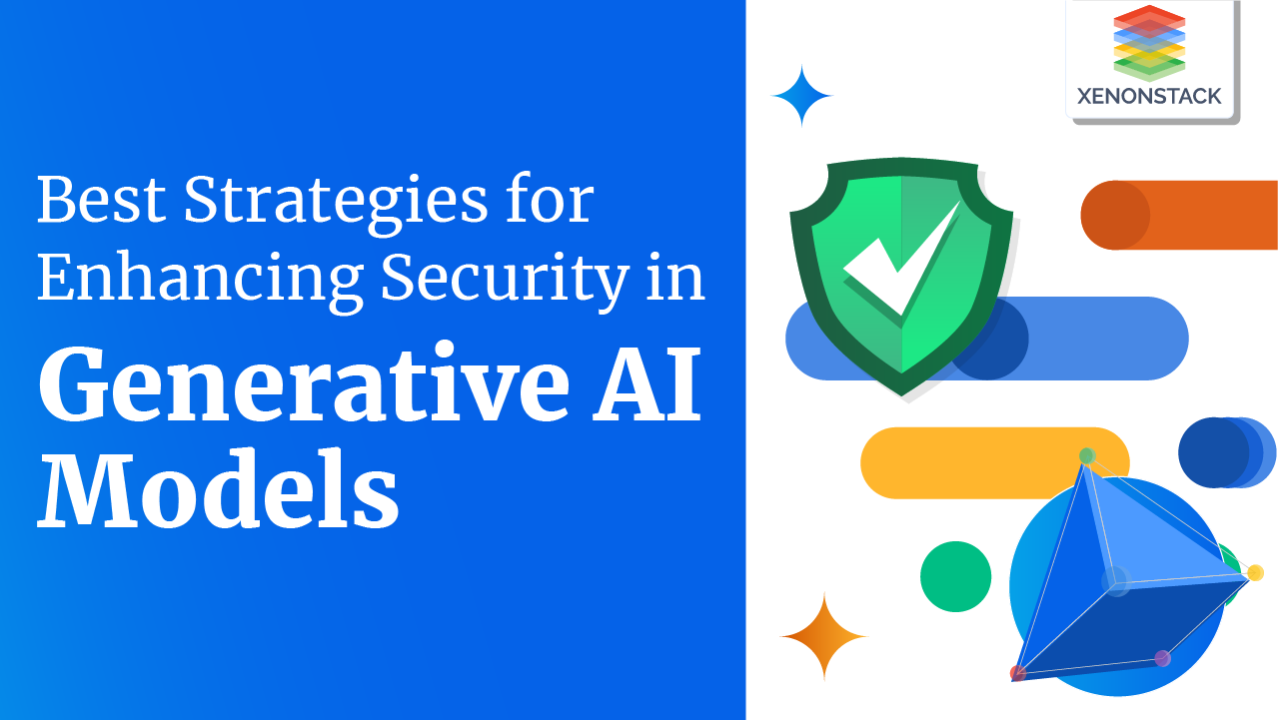
The rapid advancement of generative AI (GenAI) in software development presents exciting opportunities but also raises significant ethical concerns and challenges. We need to carefully consider the potential impacts of this technology on various aspects of software creation and deployment, from algorithmic bias to the very nature of work itself. Addressing these concerns proactively is crucial to ensure responsible innovation and prevent unintended negative consequences.
The integration of GenAI into the software development lifecycle introduces several ethical dilemmas that demand careful consideration and proactive mitigation strategies. These range from biases embedded within the algorithms to the potential displacement of human developers and the complex issues surrounding intellectual property rights.
Ethical Concerns Related to GenAI in Software Development
A comprehensive understanding of the ethical implications is crucial for responsible development and deployment. The following table Artikels key concerns, their impacts, and potential mitigation strategies.
| Concern | Description | Impact | Mitigation Strategy |
|---|---|---|---|
| Algorithmic Bias | GenAI models are trained on vast datasets, which may reflect existing societal biases. This can lead to AI-generated code that perpetuates or even amplifies these biases, resulting in discriminatory outcomes. For example, a facial recognition system trained on a dataset lacking diversity might perform poorly on individuals from underrepresented groups. | Unfair or discriminatory software; erosion of trust in AI systems; potential legal repercussions. | Careful curation of training data to ensure representation and balance; rigorous testing and auditing for bias; incorporating fairness constraints into model development; ongoing monitoring and remediation. |
| Intellectual Property Rights | The use of GenAI can raise questions about copyright and ownership of the generated code. If the AI generates code that is substantially similar to existing copyrighted work, it could lead to infringement claims. Furthermore, the ownership of code generated by an AI tool is unclear in many jurisdictions. | Legal disputes; uncertainty regarding ownership; hindering innovation due to fear of litigation. | Clear licensing agreements; establishing guidelines for AI-generated code ownership; promoting open-source development where appropriate; utilizing AI tools that explicitly address IP concerns. |
| Job Displacement | The automation potential of GenAI in software development raises concerns about job displacement for programmers and developers. While GenAI can augment human capabilities, it may also replace certain tasks, potentially leading to job losses in some sectors. | Increased unemployment; social and economic disruption; need for workforce retraining and adaptation. | Focusing on reskilling and upskilling programs for developers; emphasizing the collaborative nature of GenAI and human expertise; promoting the development of new roles that leverage AI capabilities. |
| Privacy and Security Risks | GenAI models often require access to sensitive data during training and operation. This raises concerns about the privacy and security of this data, particularly if it includes personal information or trade secrets. Malicious actors could potentially exploit vulnerabilities in GenAI systems to gain unauthorized access to sensitive data or manipulate the AI’s outputs. | Data breaches; loss of confidential information; manipulation of AI outputs for malicious purposes. | Implementing robust data security measures; using differential privacy techniques to protect sensitive data; regular security audits and penetration testing; employing secure development practices throughout the AI lifecycle. |
Ensuring the Security and Privacy of GenAI-Generated Code and Data
Protecting the security and privacy of GenAI-generated code and data is paramount. Potential vulnerabilities include data poisoning (introducing malicious data into the training set), model inversion (extracting sensitive information from the model itself), and adversarial attacks (manipulating inputs to produce unintended outputs). Addressing these challenges requires a multi-faceted approach encompassing robust security protocols, rigorous testing, and ongoing monitoring.
For instance, a malicious actor could potentially inject biased or malicious code into the training data of a GenAI model used for generating security protocols. This could lead to the generation of vulnerable code with backdoors or weaknesses that compromise the system’s security. To mitigate this, rigorous data validation and sanitization techniques are crucial. Furthermore, continuous monitoring of the AI’s outputs for anomalies and deviations from expected behavior can help identify and address potential security vulnerabilities early on.
Strategies for Responsible Development and Deployment of GenAI-Powered Software Development Tools
Responsible development and deployment necessitate a strong emphasis on transparency, accountability, and human oversight. Transparency involves making the AI’s decision-making processes understandable and explainable, enabling users to understand how the AI arrived at a particular output. Accountability means establishing clear lines of responsibility for the AI’s actions and their consequences. Human oversight ensures that human experts are involved in the process to guide the AI, review its outputs, and intervene when necessary.
For example, a GenAI-powered code generation tool should provide clear documentation of its limitations and potential biases. It should also include mechanisms for human review and intervention, allowing developers to override the AI’s suggestions if necessary. Furthermore, regular audits of the tool’s performance and impact are crucial to ensure that it is being used responsibly and ethically.
Future Trends and Predictions for GenAI in Software Development and Security
The rapid advancement of generative AI (GenAI) is poised to fundamentally reshape the software development and security landscapes over the next decade. We’re moving beyond the initial experimentation phase, and the integration of GenAI into everyday workflows is becoming increasingly seamless. This section explores specific predictions for the future evolution of GenAI in these critical areas, focusing on the next 5-10 years.
GenAI’s Projected Evolution in Software Development and Security
The following table Artikels key trends, their descriptions, and their projected impact on both software development and security practices. These predictions are based on current technological advancements and observed adoption rates across various industries. Consider these not as absolute certainties, but rather as highly probable scenarios based on current trajectories.
| Trend | Description | Impact on Development | Impact on Security |
|---|---|---|---|
| Automated Code Generation | GenAI models will become significantly more sophisticated at generating high-quality, secure, and maintainable code from natural language descriptions or existing codebases. This includes generating entire applications from specifications. | Increased developer productivity, faster development cycles, reduced coding errors. Focus shifts from coding to design and architecture. | Reduced vulnerabilities introduced through manual coding. Improved code quality leads to fewer security flaws. |
| Intelligent Code Debugging and Refactoring | GenAI tools will be able to identify and suggest fixes for bugs, optimize code for performance, and automatically refactor code for improved readability and maintainability. | Faster bug resolution, improved code quality, reduced debugging time, allowing developers to focus on more complex tasks. | Improved code security through automated identification and remediation of vulnerabilities. |
| Enhanced Security Testing and Vulnerability Detection | GenAI will power more sophisticated static and dynamic application security testing (SAST/DAST) tools, identifying vulnerabilities more accurately and efficiently than current methods. It will also assist in creating more realistic and diverse test cases. | Reduced time and resources spent on security testing. Improved identification of vulnerabilities before deployment. | Significantly improved security posture of applications. Reduced risk of exploits. |
| Personalized Development Environments | AI-powered IDEs will learn individual developer preferences and coding styles, providing tailored assistance and automation. This includes intelligent code completion, automated documentation generation, and context-aware suggestions. | Increased developer productivity and satisfaction. Reduced learning curve for new technologies. | Improved code consistency and adherence to security best practices through personalized guidelines and warnings. |
| AI-Driven Threat Modeling and Risk Assessment | GenAI will assist security professionals in identifying and assessing potential threats, vulnerabilities, and risks more comprehensively and proactively. This could include predicting potential attack vectors and recommending mitigation strategies. | Faster and more accurate risk assessments. Proactive security measures based on predicted threats. | Reduced exposure to security breaches and improved incident response capabilities. |
Transformation of the Software Development Landscape
In the long term, GenAI will likely lead to a significant shift in the roles of developers and security professionals. Developers will increasingly focus on higher-level tasks such as system architecture, design, and requirements engineering, leaving much of the routine coding and testing to AI. Security professionals will become more involved in AI model training, threat modeling, and oversight of automated security processes.
The emphasis will shift from reactive security measures to proactive threat prevention and AI-driven risk management. This will likely necessitate upskilling and reskilling initiatives for professionals to adapt to these evolving roles and effectively collaborate with AI systems. For example, a developer might spend less time writing repetitive boilerplate code and more time crafting innovative solutions to complex problems, while a security professional could leverage AI to predict and prevent vulnerabilities rather than solely reacting to them after discovery.
Outcome Summary
The integration of GenAI into software development and application security is undeniably transforming the industry. While challenges exist regarding ethical concerns and responsible implementation, the potential benefits – increased efficiency, improved security, and higher quality software – are too significant to ignore. As GenAI continues to evolve, its role will only become more central, demanding a proactive and responsible approach from developers and security professionals alike.
The future of software development is undeniably intertwined with the intelligent evolution of GenAI.
Helpful Answers
What are the biggest risks associated with using GenAI in software development?
Major risks include introducing bias from training data, potential vulnerabilities in GenAI-generated code, and the unintentional exposure of sensitive information during the development process. Proper data sanitization, rigorous code review, and robust security protocols are crucial mitigations.
Will GenAI replace software developers?
No, GenAI is more likely to augment rather than replace developers. It automates repetitive tasks, freeing developers to focus on higher-level design, problem-solving, and creative aspects of software development. The human element remains essential for critical thinking and complex decision-making.
How can companies ensure the ethical use of GenAI in their software development?
Ethical use requires a multi-pronged approach: establishing clear guidelines, implementing robust oversight mechanisms, prioritizing transparency in algorithms, and actively addressing potential biases. Regular audits and ethical reviews are essential to ensure responsible implementation.
